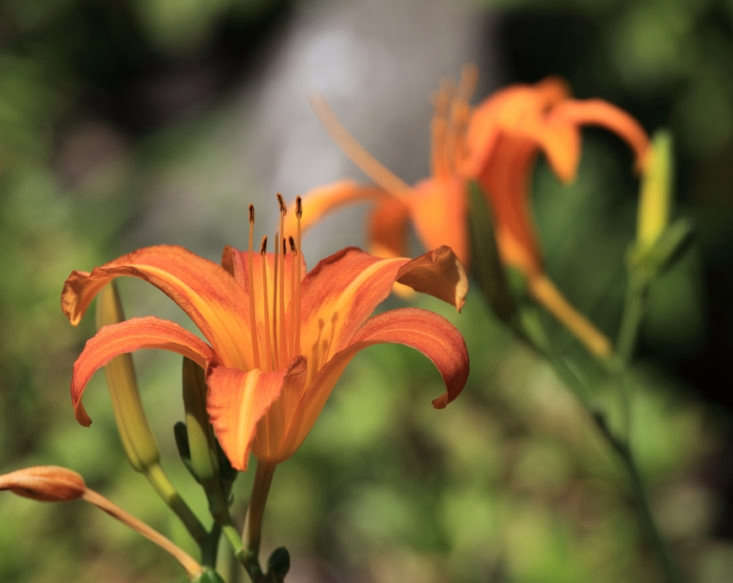Daylily, Hemerocallis: “The Perfect Perennial”
Please don’t confuse the daylily with tiger lilies, trumpet lilies, Asiatic lilies, or any other lilies for that matter. Despite the similarity of their funnel-shaped flowers, daylilies are not members of the same horticultural family as Liliums. They do, however, solve some of the same problems in the garden with their cheery, colorful blooms and long-lived, low-maintenance personalities.
The daylily is an herbaceous perennial that grows in clumps and, with thousands of cultivars to choose from, can be a useful plant to edge a path, stabilize soil on a hillside, or brighten the middle or even the back of a flower border in late summer when other flowering plants flag.
Native to Asia, Hemerocallis is at home in temperate climates around the world (and depending on the variety will thrive in USDA growing zones 3 to 10).
Is daylily the right plant for your garden? Most likely: It has been dubbed “the perfect perennial” by authors (and longtime gardeners) Lewis and Nancy Hill. Read on for everything you need to know about daylilies.

Daylilies earn their name from their nature: Each flower wilts after about 24 hours. Luckily, there may be dozens of buds on each leafless stem (known as a scape), which keeps a clump in bloom for a month or longer.
Known for their cheery orange and yellow colors (English plantswoman Vita Sackville-West famously consigned their vivid hues to her Sunset Garden near the front door of South Cottage at Sissinghurst Castle), daylilies have in recent decades come to the attention of enthusiastic hybridizers whose work has broadened the offerings considerably. Many different types that are available now include “double, fragrant, miniature, ruffled, spider, and trumpet-shaped flowers, as well as those with halos, blotches, and ‘piecrust’ edgings,” write the Lewises in their classic reference guide, Daylilies: The Perfect Perennial.

The American Daylily Society has a wealth of information, including a Daylily Database you can search by cultivar or hybridizer to learn more about flower color, mature plant size, and bloom season of a particular variety. I learned, for instance, that my longtime favorite ‘Stella de Oro’ is a sunny yellow early bloomer that can be encouraged to rebloom; fragrance, alas, is dormant.
Cheat Sheet
- Before their arrival in Europe in the 1500s, edible daylilies were a common source of food and medicine in Asia, where they grow wild.
- In the wild, daylily colors are limited to yellow, orange, and rusty red. But thanks to hybridization, the flowers’ color range has been expanded to include a rainbow, and “the only colors notably lacking are pure white and pure blue. Needless to say, hybridizers are avidly pursuing these two colors,” notes the American Daylily Society.
- Daylilies are happy companions for bellflower, yarrow, tickseed, and coneflowers.

Keep It Alive
- Plant daylilies or divide existing clumps in early autumn before the threat of frost.
- Once established, daylilies are drought tolerant in well-drained soil. (Do not water them from above at midday; if they get wet, flowers will wilt prematurely from the heat of the sun.)
- For prolific flowers, plant daylilies in full sun (six or more hours a day). While they will tolerate partial shade, they will produce fewer blooms under those conditions.
- Deadhead spent blooms but leave the scapes in place until all buds have wilted; cut back the stem to the crown of the plant and leave foliage in place until it yellows at the end of the season.

For more growing and care tips, see Daylily: A Field Guide to Planting, Care & Design in our curated guides to Perennials 101. Read more:











Have a Question or Comment About This Post?
Join the conversation